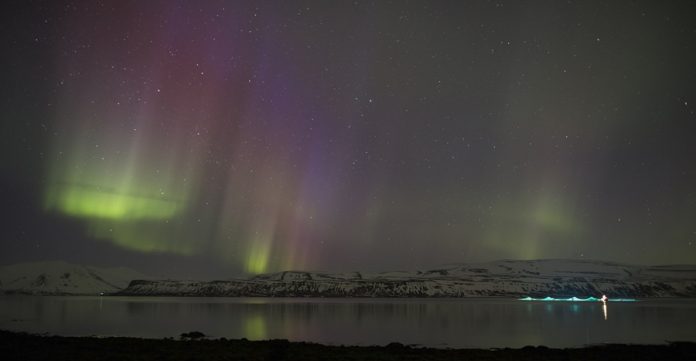Reports estimate that up to 3,500 salmon may have escaped from the Arctic Fish facility in August.
Farmed salmon have potentially infiltrated at least eight salmon fishing rivers in Northwest Iceland and the Westfjords,according to local media outlet RUV.
The escape was uncovered following the discovery of two holes in a net at Arctic Fish’s site located in Patreksfjörður, Westfjords in August.
Reports estimate that up to 3,500 salmon may have escaped from the facility.
Following the discovery of a hole in a the net, prompt action was taken by the country’s Directorate of Fisheries to prevent the potential spread of escaped farmed salmon in Icelandic waters.
By August 22, aerial monitoring using drones had revealed the presence of fish in Osa, located in Patreksfjörður.
Four salmon were caught in the subsequent netting, displaying characteristics typically associated with farmed salmon.
Authorities are currently carrying out DNA tests on the captured fish to ascertain if they originated from the Patreksfjörður facility.
Gunnar Örn Petersen, the CEO of The Federation of Icelandic River Owners, expressed serious concerns to RÚV: “In the last few days, we’ve received numerous reports from different fishing areas suggesting that farmed salmon have entered our water systems.”
He emphasised the similarity in size between the caught salmon and those from the Patreksfjörður facility but didn’t rule out the possibility of them being offspring from a previous escape incident in Arnarfjörður in 2021.
Threat of genetic mixing
“This could be the death knell for our native salmon populations if the government doesn’t intervene,” Petersen warned.
However, Heiðrún Lind Marteinsdóttir, CEO of Fisheries Iceland, took a more measured stance, suggesting that escaped farmed salmon in Iceland’s rivers were foreseeable. “Just because salmon enter a fishing river doesn’t signify an immediate threat of genetic mixing or endangerment of the wild population,” she said in an interview with Icelandic news magazine Kastljós.
She referenced risk assessments indicating that the proportion of farmed salmon in Icelandic rivers can reach up to 4 percent without posing a significant threat to wild populations.
Currently, the national average is at 0.09 percent.
Arctic Fish operates in the Westfjords of Iceland where it currently has licenses for 27,100 metric tons of production
Mowi, the world’s largest salmon farmer, reached an agreement in October last year to acquire 51.3 percent of the shares in Arctic Fish from rival salmon producer SalMar as part of a deal smoothing the way for the latter’s merger with NTS.









